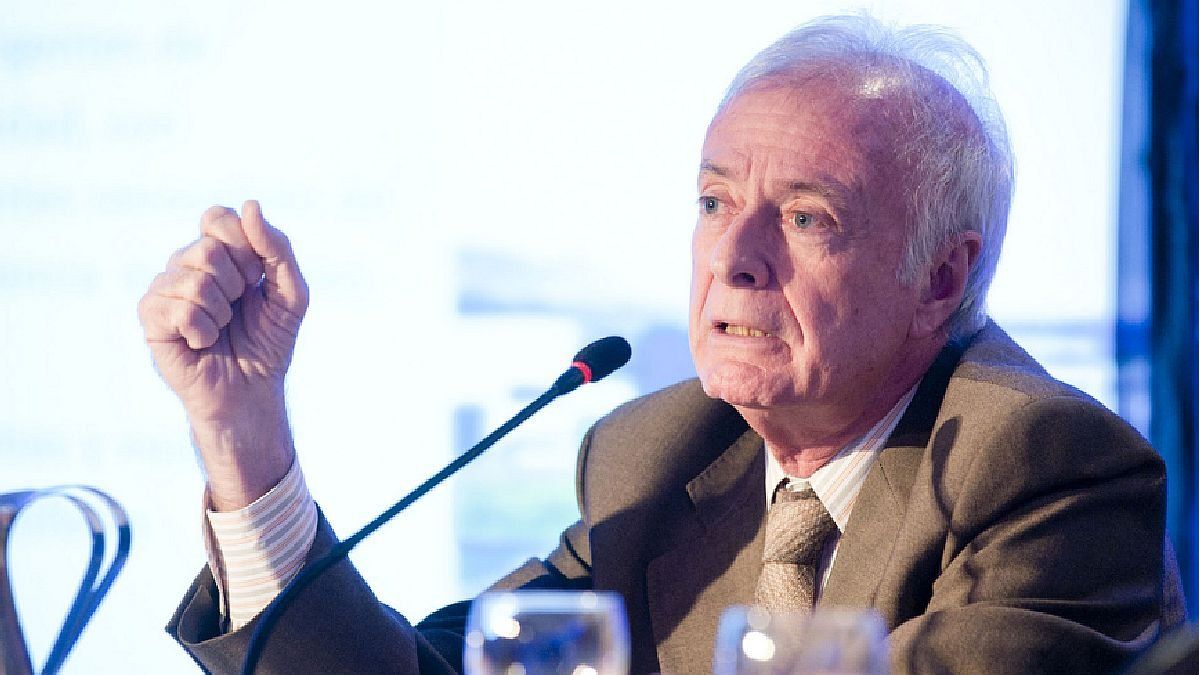“The directors of the IMF will now have to explain to the taxpayers of the countries (members) that they have to give us subsidies because we do not want to correct the rates”he pointed out when analyzing the reduction goal demanded by the international organization to close the debt agreement.
Journalist: Why do you say that we are in a bear trap with gas and electricity?
Alberto Calsiano: The price of gas directly impacts the price of electricity. The price of the electron in the wholesale market has an important gas component. Today 64% of electricity is generated by thermal power plants, which should run on natural gas. But today the conventional fields are declining production, Bolivia is stopping sending gas to Argentina and what remains is unconventional gas, mainly with the Loma La Lata field in Vaca Muerta, but what you do not have there is transport capacity . This is the bear trap: how are we going to deliver gas to the thermal power plants? The only way will be to import.
Q.: And there arises the problem of international price increases…
AC: The imported price is US$27 or US$28 per million BTU, while the local price is almost US$4. The other alternative is to run the plants with liquid fuels, which also follows the international price. Thus, we are going to have a higher price in the wholesale market, which we are going to have to apply to the tariff, which in turn has to be charged for transportation, distribution and taxes.
Q.: Is the expected 20% increase in average rates enough to cover this gap?
AC: No, not dreaming. Last year it was between about $11 billion in energy subsidies, and if that is to be put to zero, the increase would have to be more than 100% in all components. Today there is 30% of the electricity demand that pays the real price of energy in the market, which are the GUMA, GUME and the GUDIs. The first two buy from the wholesaler, from Cammesa. They came to pay up to US$80 per megawatt/hour and then fell to US$73 in 2021. They consume 12% of the total. The GUDIs are about 6,200 users and receive all the service from the distributor, with a seasonal price set by the Secretary of Energy. With Resolution 40 of last week, GUDIs were given a 20% increase in the seasonal price, which takes them to the value of GUMAs and GUMEs. What remains are homes and users below 300 Kv of power, such as industries and businesses. To them it is necessary to see what value they will put on the electron and then the transport and the distributor. That will be decided at the public hearing. What is not clear is whether it is 20% of the energy or the total rate. If it is about the rate, it does not move the ammeter to the distributors, who have been demanding adjustments for a long time.
Q.: Should all subsidies be removed?
AC: The electron has to be worth what it really costs to produce it, otherwise there is no way, and subsidies should be reserved for those sectors that are vulnerable and have no other alternative, because without energy you do not exist today.
Q.: How do international prices with a barrel of oil at US$90 impact the increase in subsidies?
AC: Gas today comes with a price seven times higher than local gas. And one ship is not going to be imported, several are going to be brought. And if gas is not used, diesel or fuel oil will be used, so there will be significant increases in energy, both for those that use gas and for those that use electricity.
Q.: Will it be possible to reduce this year the subsidies of US$11,000 million from 2021?
AC: For that it would be necessary to practically eliminate the subsidies, and they are not going to do it. Today a demand group that pays the real value of the market, which is the industry. There, transportation and distribution have to be corrected, because a lower value is paid than corresponds, which is a value regulated by the State. But, for example, carriers have been frozen for two years, with 50% inflation in 2021, dollarized costs and rising wages. If this isn’t resolved, we’re going to get into serious trouble. Do not fall in love with subsidies. It is something not wanted, but necessary due to special situations that occur in the economy of a country, but if it is the common denominator and you have already internationalized it among the people, it will cost you a lot to get it out.
Q.: Here they are already internationalized…
AC: Sure, today you pay $5,000 for cable television and $600 for electricity. There can’t be that much difference. There is no idea that generating, transporting and distributing energy carries a cost inside, whether it is done by the State or private parties, and that this cost is paid. It is paid by the user or society through subsidies, which is the worst tax, the inflationary one, or other taxes. If we get to $14 billion in energy subsidies, who is going to pay for it? Where does it come from? With the bomb that was armed, how is it done now to correct this from a serve?
Q.: Do you think they can be reduced as requested by the IMF to at least 1.9% of GDP?
AC: The IMF is more of a club of friends than a bank. It is a rescue club, where money is lent of last resort. And that money comes from the taxpayers who are in Europe today, for example. There today energy is paid 20 times more than what is paid in Argentina, and the directors of the IMF will now have to explain to the taxpayers of those countries that they have to give us subsidies because we do not want to correct the rates. It is very complex to pour funds into a country that does these things with subsidies. From 2005 to 2015 there were more than US$96,000 million in subsidies, which did not go to investments, generation plants, high-voltage towers, transportation, but was spent on imports and rate subsidies.
Source: Ambito
David William is a talented author who has made a name for himself in the world of writing. He is a professional author who writes on a wide range of topics, from general interest to opinion news. David is currently working as a writer at 24 hours worlds where he brings his unique perspective and in-depth research to his articles, making them both informative and engaging.




